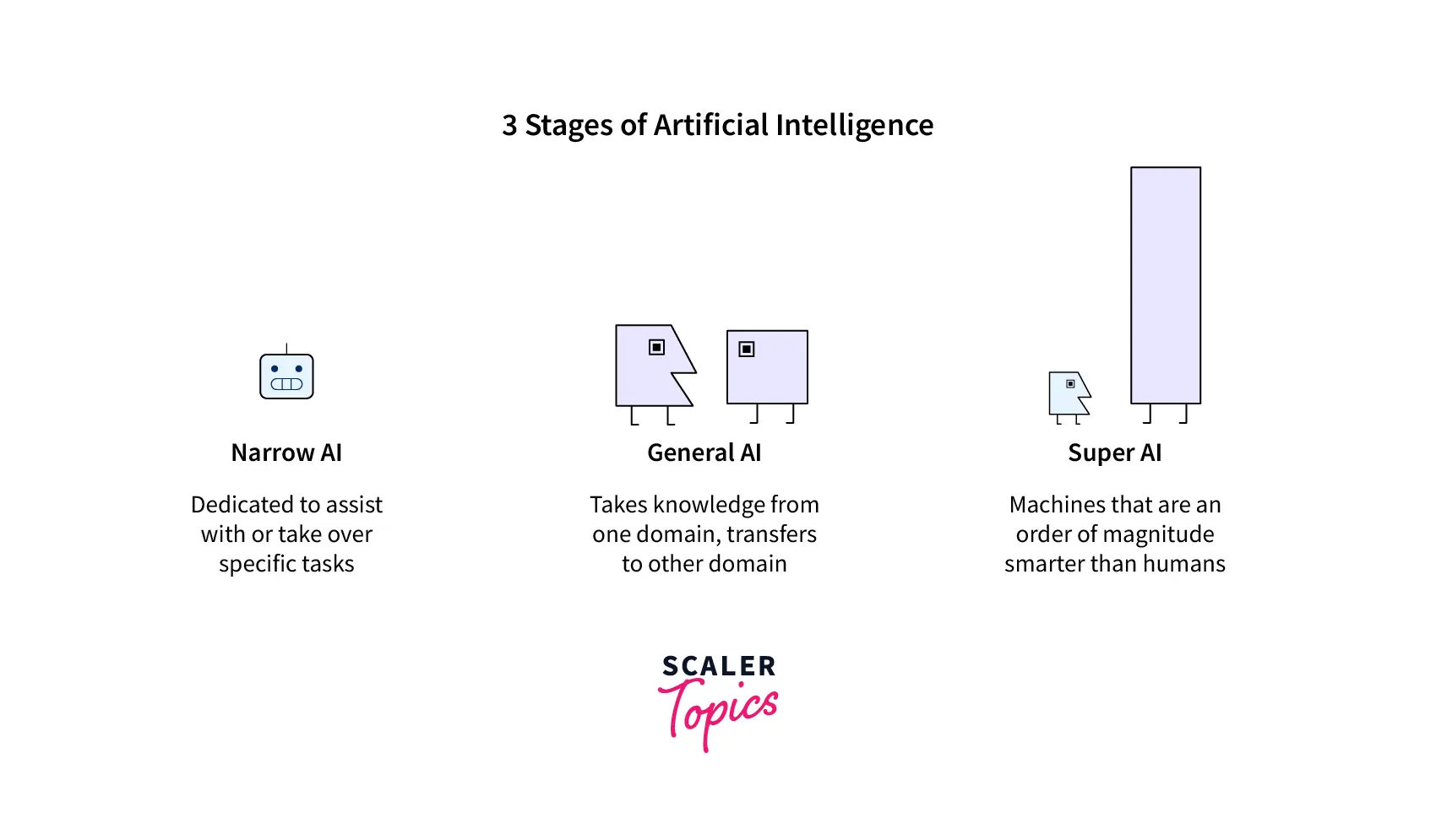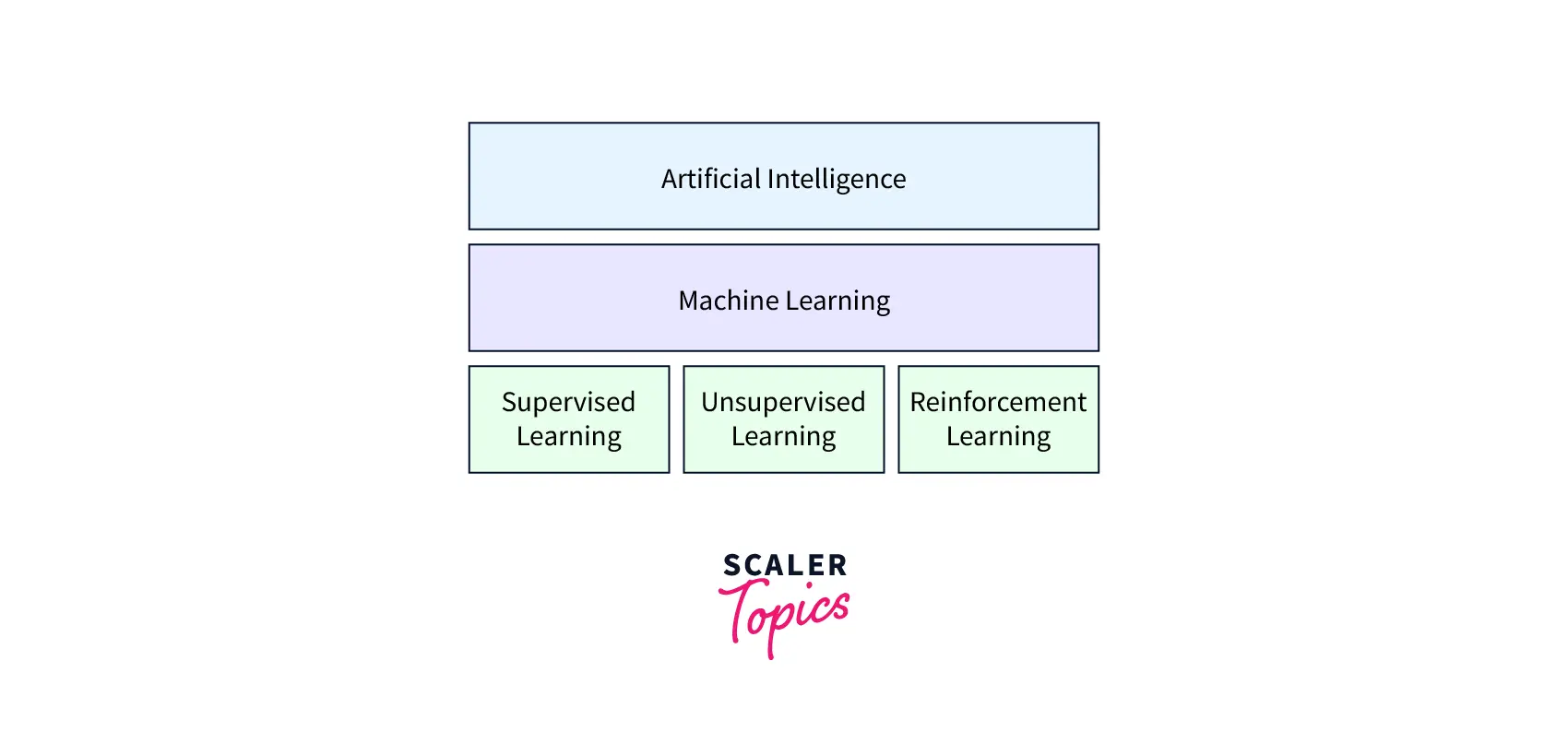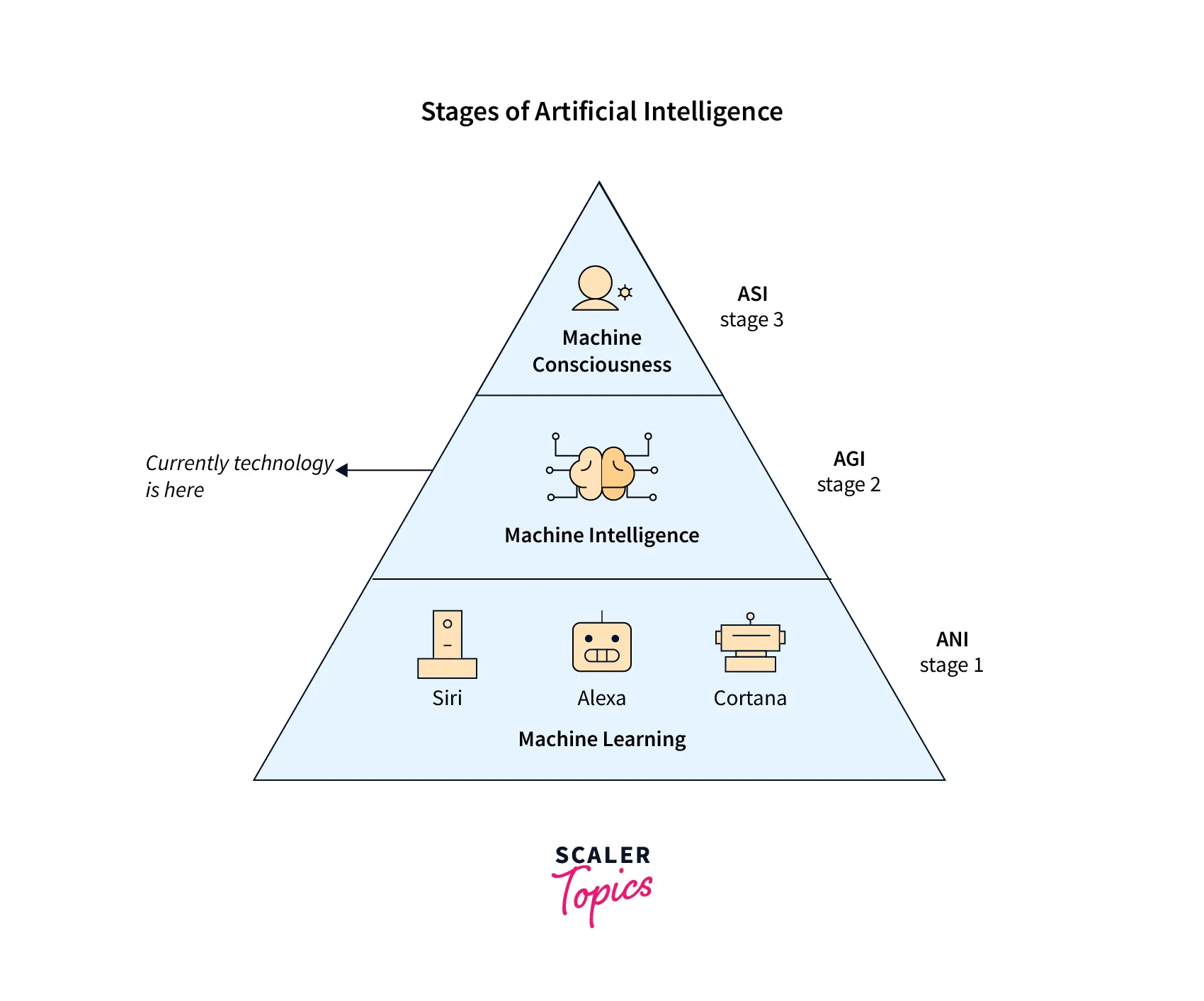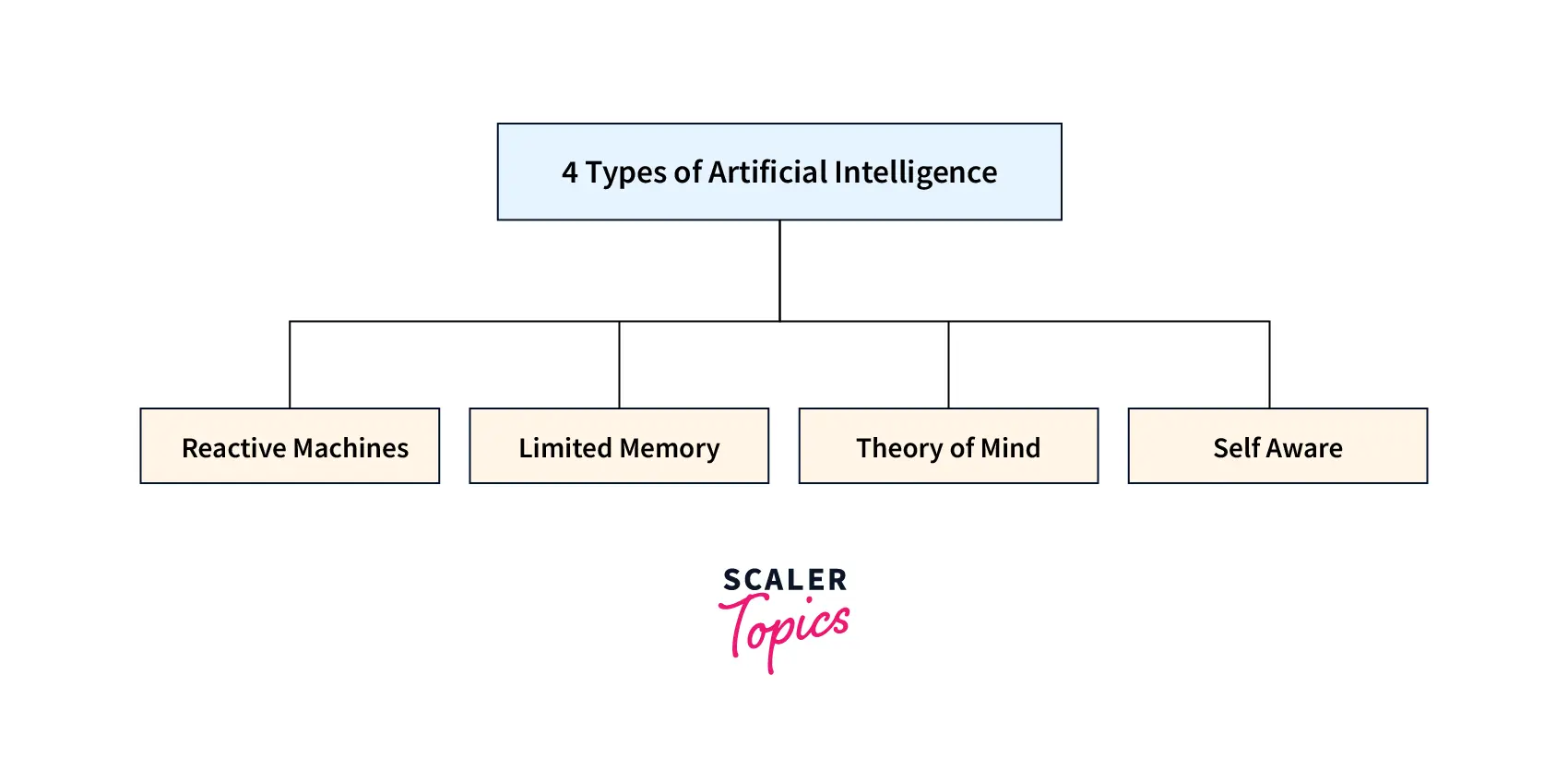Types of Artificial Intelligence
Overview
Artificial intelligence (AI) means "making computers smart", just like humans. Artificial intelligence can do things that generally only humans can do, like understanding speech, making decisions, and learning. AI can differ depending on how smart they are, how they learn and process information, and what they can do with the information learned. The smartness of different AI models may vary according to the underlying algorithm that is used.
Overall, AI is a way to make computers do things that we used to think only humans could do. It can help us in many ways, like making our lives easier, helping doctors diagnose illnesses, or even exploring space. This article will explore the different types of artificial intelligence and their characteristics.
Introduction
Artificial Intelligence (AI) is a field of computer science that aims to make computers as intelligent as humans. It involves developing machines that can perform tasks that typically require human-like intelligence, such as understanding natural language, recognizing images, making decisions, and learning from experience. AI can be divided into different types depending on how smart they are and what they can do. For example, some AI models like Siri or Alexa can recognize speech and answer questions, while others can play chess like robots. Some AI systems can drive cars by themselves, while others can even write their own stories or compose music.
One of the most remarkable things about AI is its ability to learn and improve over time. Different types of Artificial Intelligence systems can use different types of learning, such as supervised learning, unsupervised learning, and reinforcement learning. By learning from data and feedback, AI systems can become better at performing their tasks. AI has many applications in various fields, including healthcare, finance, education, and transportation. For instance, AI can help doctors diagnose diseases more accurately, aid in financial decision-making, provide personalized learning experiences for students, and enable self-driving cars to navigate safely on the roads.
Why are there Different Types of AI?
There are different types of AI because the field of artificial intelligence is vast, and there are many ways in which machines can be designed to show intelligent behavior. Additionally, different types of AI are suited for different types of tasks, so it's important to have a variety of AI systems to choose from depending on the task provided. The following are some specific reasons why there are different types of AI:
- Levels of intelligence:
AI can be classified based on its levels of intelligence, such as narrow AI and general AI. Narrow AI is designed to perform a specific task, while general AI is capable of performing any intellectual task that a human can. - Learning methods:
AI can also be classified based on its learning capabilities, such as supervised, unsupervised, and reinforcement learning. Each of these methods is suited to different types of tasks and data. - Cognitive abilities:
AI can be classified based on its cognitive abilities, such as perception, reasoning, and natural language processing. These abilities are important for different types of tasks, such as recognizing images, making decisions, and understanding human language. - Applications:
Different types of Artificial Intelligence can be classified based on their applications, such as healthcare, finance, and transportation. Different types of AI are suited to different applications depending on the specific requirements and constraints of the task.
Stages of Artificial Intelligence
There are three stages of artificial intelligence:
- Artificial Narrow Intelligence (ANI)
- Artificial General Intelligence (AGI)
- Artificial Super Intelligence (ASI)

- ANI: refers to AI systems that are designed to perform specific tasks, such as speech recognition or image classification. These systems are highly specialized and can only perform the task they are designed for.
- AGI: refers to AI systems that can perform any intellectual task that a human can. These systems are capable of reasoning, learning, and problem-solving in any domain, just like humans.
- ASI: refers to AI systems that are significantly more intelligent than humans in every aspect. These systems are capable of performing tasks that humans cannot even comprehend.
Types of Learning in Artificial Intelligence
Systems that use Artificial Intelligence (AI) can be categorized in various ways, including the way how they learn. The three primary AI learning categories are supervised, unsupervised, and reinforcement learning.

- Supervised learning involves training an AI system using labeled data, which means data that has already been categorized or identified. For instance, a collection of photographs that have already been labeled as "cat" will be provided to an AI system that is being trained to recognize images of cats. The machine will then apply this knowledge to figure out how to spot cats in more photographs.
- Unsupervised learning involves training an AI system using unlabeled data, which means data that has yet to be previously categorized. In this case, the AI system must identify data patterns and relationships without prior knowledge or guidance. This type of learning can be especially useful in cases where the data is too complex for humans to categorize or label. The decision to use unsupervised learning depends on the underlying data and the problem statement in hand.
- Reinforcement learning is a type of learning where the AI system learns from its own experiences. In this case, the system receives rewards for making correct decisions and punishments for making incorrect decisions. Over time, the system will learn to optimize its decisions to receive the greatest possible reward. This type of learning is especially useful when it's difficult to provide labeled or unlabeled data for the system to learn from.
By understanding the different types of learning in AI, we can better appreciate the range of capabilities these systems have and how they can be used to solve various problems.

Artificial Narrow Intelligence (ANI)
Artificial Narrow Intelligence (ANI) is a type of computer system that can do a specific job well. These systems are made to do just one thing, and they can't do anything else. For instance, a computer program that can understand English speech cannot understand any other language. ANI systems are made to do jobs that are difficult or take a long time for people to do. ANI systems can help doctors diagnose diseases faster and more accurately, help banks detect fraudulent activities, and help self-driving cars navigate the roads.
Although ANI is just one type of AI, it has numerous practical applications that improve our daily lives. They can handle jobs that are too difficult or time-consuming for humans to complete. These systems can also give us advice on how to make better choices.
Artificial General Intelligence (AGI)
Artificial General Intelligence (AGI) is an exciting and ambitious goal for AI researchers. AGI is one of the types of Artificial Intelligence systems that have human-like intelligence and the ability to think and learn about any subject or domain. This type of AI system would be able to understand language, solve problems, and learn new skills just like humans do. A fully functioning AGI system is not available yet. But the research in recent years has made significant advances to develop such a system. AGI, if developed, could change many industries such as healthcare, transportation, and finance.
AGI has the advantage of being able to learn and adjust to new situations, which is like how humans learn new things quickly. This means that AGI could do tasks that are too hard or take too much time for humans to do. However, there are some worries about AGI becoming too powerful and causing a danger to humans if it is not controlled properly. That's why people are discussing and debating on how to develop AGI safely and ethically. Despite the challenges, AGI is an exciting field that has great potential to bring about innovation and progress. If developed properly, AGI could benefit society and help solve some of the world's biggest problems.
Artificial Super Intelligence (ASI)
Artificial Super Intelligence (ASI) is a type of AI that is much smarter than humans in every way. The same abilities as humans do not limit ASI and can solve problems that are too complex for us. Although we have not built a complete ASI system, researchers think it's possible and are trying to make it happen. If we could create ASI, it could revolutionize every aspect of our society. ASI could make scientific discoveries that we are not capable of making. It can design new technologies that we cannot even imagine and solve complex problems that we have been unable to solve.
Some people worry that creating Artificial Super Intelligence (ASI) may be dangerous and potentially harm humans. To avoid any possible risks, it is important to consider the ethical and safety concerns surrounding the development of ASI. Even though ASI research is fascinating, we should be careful and thoughtful about its development to ensure that we can use it to help people.
Types of AI
AI systems can also be classified based on their cognitive abilities. There are four types of AI: Reactive Machines AI, Limited Memory AI, Theory of Mind AI, and Self-Aware AI.

Reactive Machines AI
Reactive Machines is a type of AI that only respond to direct stimuli. They cannot form memories or use past experiences to inform their responses. Reactive Machines operate in real time and can react quickly to environmental changes. Reactive Machines are used in various applications, such as robotics and gaming.
For example, a robot that welds car parts together is a Reactive Machine. It only responds to the current conditions of the car parts and does not use past experiences to improve its performance. Similarly, in video games, computer-controlled characters reacting only to the player's actions are also Reactive Machines.
One significant advantage of Reactive Machines is their speed and efficiency. Since they only respond to direct stimuli, they can operate quickly and accurately. However, Reactive Machines have limitations, as they cannot learn from past experiences or make decisions based on past knowledge.
Overall, Reactive Machines are a useful type of AI for specific applications that require real-time responses to changing conditions. However, they are not suitable for more complex tasks that require the ability to learn and make decisions based on past experiences.
Limited Memory AI
Limited Memory AI is a type of AI that can make decisions based on limited information. This type of AI is designed to use past experiences to make decisions in the present, similar to how humans use their memories to make decisions. Limited Memory AI is commonly used in applications such as online shopping, fraud detection, and recommendation systems.
For example, a recommendation system for a streaming service like Netflix may use limited memory AI to suggest movies or TV shows based on the user's past viewing history. Similarly, an online shopping platform may use this type of AI to recommend products based on the user's past purchases or browsing history.
Limited Memory AI is less advanced than AGI or ASI, but it is still useful for automating tasks and improving decision-making in specific applications. It cannot generalize or adapt to new situations in the way that AGI can. Still, it can be very effective when it can access much data about past experiences.
Theory of Mind AI
AI systems with the theory of mind capabilities may comprehend and decode other humans' beliefs, feelings, and intentions. This kind of AI is made to function in social environments and can recognize and react to other human behavior.
For instance, social robots with improved human interactions can be created using the Theory of Mind AI. Interacting with these robots is more intuitive and natural due to their ability to recognize human emotions and respond appropriately. Moreover, virtual assistants can be created with Theory of Mind AI to help them comprehend the requirements and intentions of their users.
The Theory of Mind AI is still in its infancy, and scientists are attempting to increase the precision and effectiveness of these systems. However, the enormous array of potential uses for this technology might fundamentally change how we communicate with both machines and one another.
Making sure that the technology is created ethically and with the right protections is one of the challenges with Theory of Mind AI. Because this kind of AI can gather private information about people, privacy and security issues must be carefully considered. Theory of Mind AI is an interesting study topic with enormous potential for societal benefits, but its growth must be approached deliberately and responsibly.
Self-aware AI
Self-aware AI is one of the types of Artificial Intelligence systems that possess a consciousness and are aware of their existence. Self-aware AI is not yet a reality, but some experts think it could be possible in the future. Scientists are currently working on ways to make it happen. Self-aware AI is a huge advancement over existing AI systems since it would enable robots to reflect on their behavior.
As opposed to obeying pre-programmed instructions, self-aware AI systems could judge based on their ideas and goals. Even while self-aware AI is still in its infancy, many academics are optimistic that it will change a wide range of sectors, including manufacturing, healthcare, and transportation.
Self-aware robots, for instance, might be employed in manufacturing to make decisions in real-time and adapt to changes in the production process. Self-aware AI may potentially be employed in the medical field to aid doctors in making more precise and effective diagnoses and patient treatments. Besides the potential advantages of self-aware AI, there are also many reasons for caution.
Several researchers are concerned that if self-aware AI gets too powerful and decides to act against our best interests, it might endanger humanity. As a result, there is constant discussion and debate regarding how to create self-aware AI morally and safely. In conclusion, self-aware AI is a fascinating and rapidly growing research field that can potentially transform our society in significant ways.
Conclusion
- Artificial intelligence (AI) means making computers smart, just like humans. Artificial intelligence can do things that generally only humans can do, like understanding speech, making decisions, and learning.
- For example, some AI models like Siri or Alexa can recognize speech and answer questions, while others can play chess like robots.
- There are different types of AI because the field of artificial intelligence is vast, and there are many ways in which machines can be designed to show intelligent behavior.
- There are three stages of artificial intelligence: Artificial Narrow Intelligence (ANI), Artificial General Intelligence (AGI), and Artificial Super Intelligence (ASI).
- AI systems can use different types of learning, such as supervised learning, unsupervised learning, and reinforcement learning.
- Cognitive abilities can be used for the classification of different types of Artificial Intelligence systems. There are four types of AI: Reactive Machines AI, Limited Memory AI, Theory of Mind AI, and Self-Aware AI.
